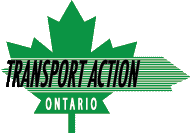By
Transport Action Ontario
|
Highways and Bridges ,
Intercity Rail and Bus ,
Latest News ,
Urban Transit
In 2015, the Province of Ontario initiated a coordinated review of four key land use plans, including the Growth Plan for the Greater Golden Horseshoe (GGH) and the Greenbelt Plan. In December, the Crombie Advisory Panel released its recommendations on how to amend and improve these Plans. The November/December issue of Ontario Report discussed the Crombie Report in more detail.
In early May, the Province released its proposed changes to these four plans. While changes are proposed in many areas, the ones of greatest interest to sustainable transportation advocates are:
- Increasing the intensification target in the Growth Plan to a minimum of 60% of all new residential development to occur in the existing defined built up area, versus 40% today.
- Increasing designated greenfield area density targets (ie new developments outside the built up area) to a minimum of 80 residents + jobs per hectare, versus 50 today.
- Requiring municipalities to plan for density targets of 150 – 200 residents + jobs per hectare within 500 m around existing and planned major transit stations. This is a new requirement not found in the previous Growth Plan. The definition of “major transit station” is that it covers all subway, LRT, BRT and GO RER stations.
- Requiring identification of transit priority corridors in Official Plans where municipalities would focus transit-related development
- Supporting the development of community hubs by encouraging public services to be located near strategic growth areas, accessible by active transportation and public transit.
- Improving transit to employment areas.
- Protecting infrastructure corridors for goods movement.
- Requiring mapping of major and potential rapid transit lines and good movement corridors.
There are major implications to these proposals. For example, York Region, a rapidly growing edge municipality, has been working on an update to its Official Plan to 2041. Different Region-wide intensification scenarios have been analyzed by staff planners. Staff is clearly pro-intensification and acknowledge the lower capital and operating costs from higher intensification. However, they have misgivings about intensification targets beyond 50%, as it would force virtually all new home construction to be apartments or condos. They believe a significant fraction of new-home buyers still want single family detached homes, and hence believe that > 50% is unrealistic from a market perspective.
What will be the effect if the province implements these higher intensification targets, the higher designated greenfield targets and the new transit station targets? Will the suburban regions rebel, especially as money from the province to construct rapid transit is inadequate? Will developers step up lobbying and/or appeal to the OMB? Will the prices for detached homes continue to skyrocket? Will the home construction market crater? Will the anticipated growth not materialize?
The combined review also contains various climate change policies, including requiring municipalities to incorporate climate change policies in their Official Plans and to develop greenhouse gas (GHG) inventories, reduction strategies and performance measures. The largest contributor to GHG emissions in the province is transportation. Will these policies by enough to slow down the growth in Vehicle Kilometers Travelled? Will the policies be a factor in the upcoming decision whether to restart the Environmental Assessment for the GTA-West expressway (Highway 413)? Should more be done in the outer ring of the GGH by encouraging interurban passenger rail and bus? Should the province become more active in supporting intermodal goods movement?
In conclusion, just as the original 2006 plans changed the face of land use planning in the GGH, the proposed 2016 changes also appear to be very significant, although many questions remain. Public consultation is planned by the Province until September 30, 2016.

